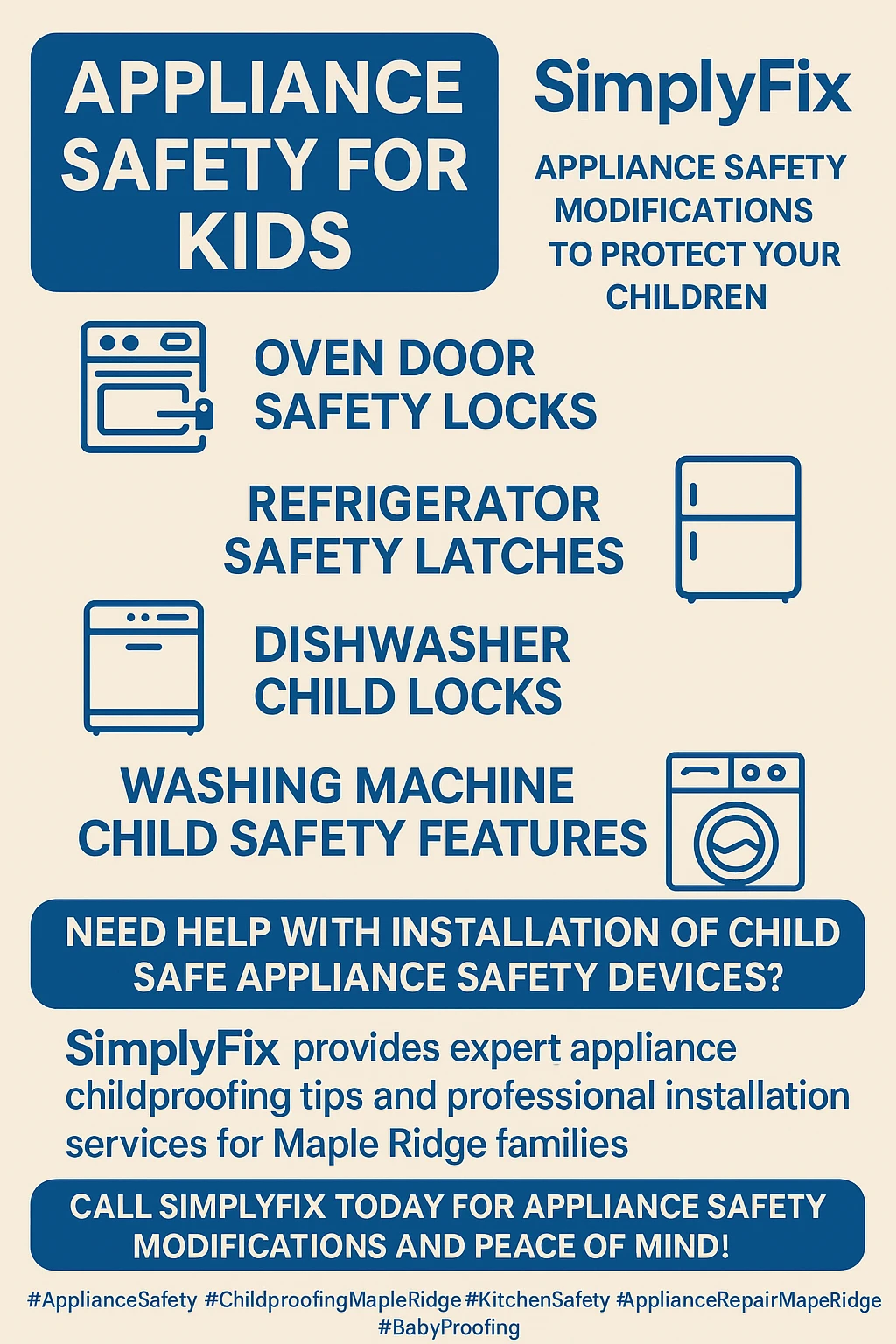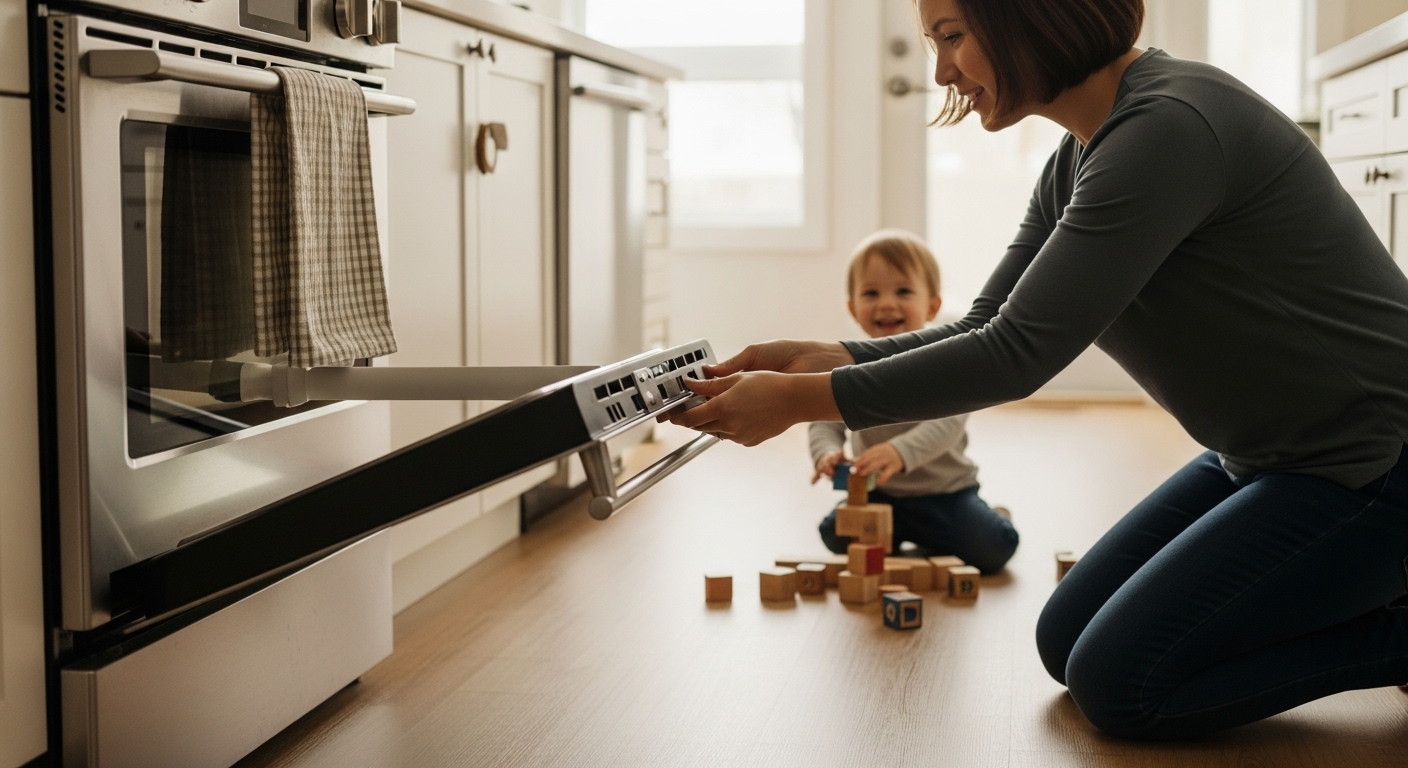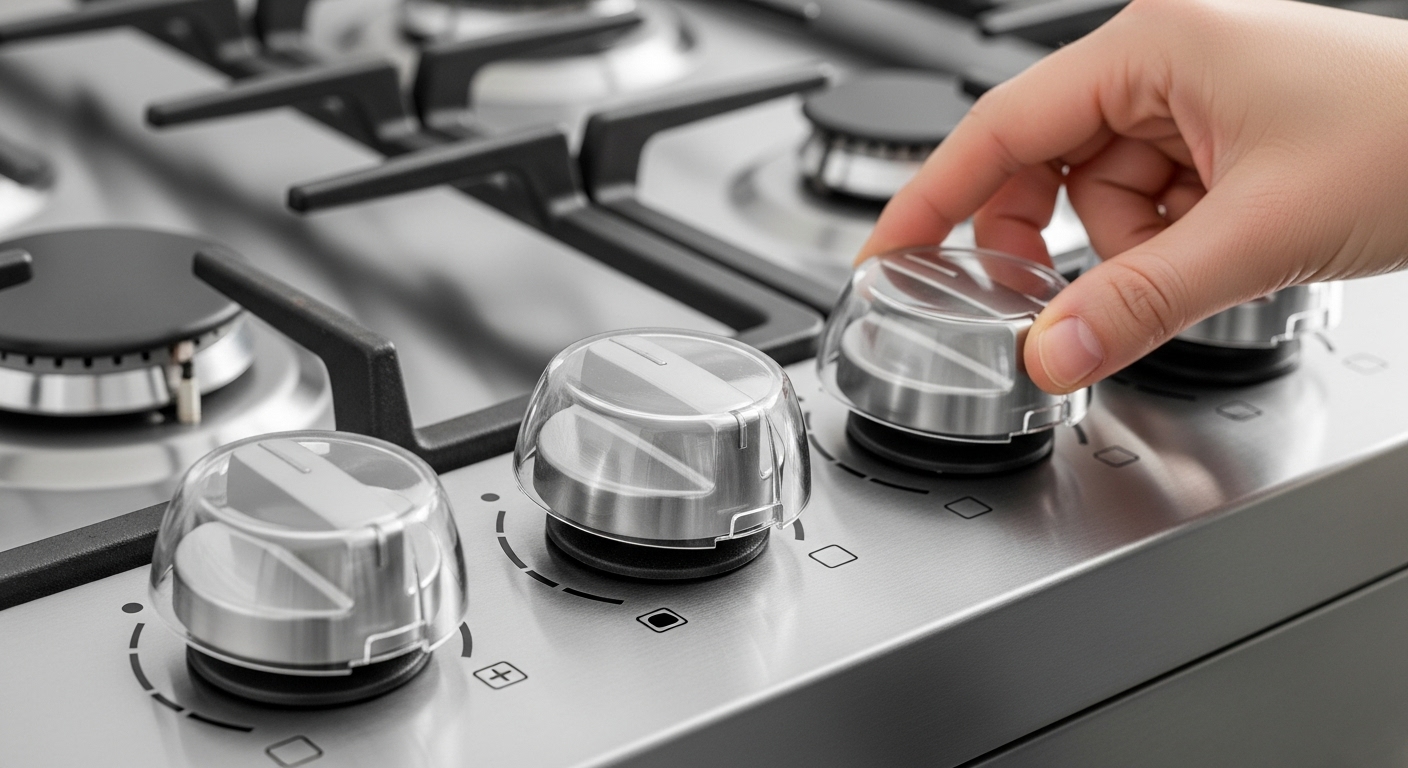How to Childproof Your Appliances: Essential Safety Modifications Every Maple Ridge Family Needs to Protect Kids from Kitchen and Laundry Room Hazards
Worried about your toddler’s fascination with those shiny appliance buttons and wondering how to keep curious little hands safe from serious hazards? You’re not alone—appliances account for over 20,000 emergency room visits annually for children under 5, but the right safety modifications can prevent these preventable accidents.
Every Maple Ridge parent knows that moment when you turn around for just a second and find your little explorer has discovered something they absolutely shouldn’t touch. When it comes to kitchen and laundry room appliances, those split-second discoveries can turn dangerous fast. From front-loading washers that pose entrapment risks to stove knobs that seem designed to attract tiny fingers, our modern homes are filled with appliances that weren’t necessarily designed with curious toddlers in mind.
The good news? With some strategic planning and the right safety modifications, you can transform your kitchen and laundry room into spaces where your family can cook, clean, and play safely. We’re talking about simple solutions like adhesive locks and outlet covers alongside more comprehensive measures like anti-tip brackets and professional childproofing assessments. Whether you’re expecting your first baby or dealing with a newly mobile toddler who’s discovered the joy of opening every door and pressing every button, this guide will walk you through the essential safety modifications that can keep your little ones safe while letting you breathe a little easier.
The reality is that childproofing isn’t a one-and-done task—it’s an evolving process that grows with your child’s development and curiosity. What works for a crawling 8-month-old won’t necessarily keep a climbing 2-year-old safe, and the solutions that worked for your first child might need updating by the time your second child reaches those same milestones. That’s why we’re covering everything from basic DIY installations you can tackle this weekend to professional services available right here in Maple Ridge, plus the seasonal considerations that come with our Pacific Northwest climate.
Key Outtakes:
- Children under 10 years account for 39% of all product tip-over injuries, with appliances causing approximately 20,612 emergency room visits annually for kids under 5
- Front-loading washers and dryers pose serious entrapment risks, requiring mandatory child lock features per UL safety standards
- Simple modifications like stove knob covers, oven locks, and refrigerator latches can prevent most kitchen appliance accidents
- Professional childproofing services cost between $180-$614 on average, but many safety devices can be installed by homeowners
- Laundry detergent pods caused 17,230 exposures among children under 6 in just two years, making secure storage critical

Understanding Appliance Hazards: Why Maple Ridge Families Need Comprehensive Childproofing

The statistics around appliance-related child injuries paint a sobering picture that every parent should understand before diving into specific safety solutions. These aren’t just numbers on a page—they represent real families who experienced preventable tragedies that could happen to any of us. When we talk about childproofing appliances, we’re not being overly cautious helicopter parents; we’re responding to documented safety risks that affect thousands of children every year.
Appliances account for 20,612 annual emergency room visits for children under 5, representing a significant but entirely preventable injury category. What makes these statistics particularly concerning is that children ages 1-4 account for 60% of all tip-over injuries, with 1-year-olds experiencing the highest injury rate at 46 injuries per 100,000 population. This means that the age when children are most mobile and curious—but least aware of dangers—is exactly when they’re most vulnerable to serious appliance-related injuries. The average 4-year-old spends approximately 80-90% of their time at home, which translates to 19-22 hours daily of potential exposure to household appliance hazards.
The most dangerous scenarios often involve appliances that parents don’t immediately think of as hazardous. Front-loading washers pose entrapment risks that can lead to suffocation, with one tragic case in Orlando where a 3-year-old child died after becoming trapped inside a front-loading washing machine. Kitchen stoves and ovens caused 9 fatalities involving appliance tip-overs, while refrigerators were involved in 6 child fatalities. These aren’t freak accidents—they’re predictable incidents that happen when curious children interact with appliances in ways manufacturers didn’t anticipate.
What’s particularly frustrating for parents is learning that over 55% of at-home injuries could have been avoided with better childproofing practices, according to parent surveys. This means that more than half of these emergency room visits, scary incidents, and tragic outcomes were entirely preventable with the right safety modifications and awareness. Common appliance dangers that parents overlook include garbage disposals that can cause severe lacerations even when turned off, dishwashers filled with sharp utensils and scalding water, and small appliances with dangling cords that can be pulled down onto children.
For Maple Ridge families specifically, our Pacific Northwest climate creates some unique seasonal considerations that most childproofing guides don’t address. British Columbia’s rainy season increases indoor time significantly, elevating appliance exposure risks during fall and winter months when families spend more time cooking elaborate meals and running multiple laundry cycles. Space heaters and portable appliances used during our colder months create additional hazards not covered in standard childproofing advice. Wet clothing and increased laundry cycles during rainy seasons mean more frequent dryer use and potential hazards, making laundry room safety especially critical for local families.
Kitchen Appliance Safety Modifications: Protecting Kids from Cooking Hazards

The kitchen represents ground zero for appliance-related child injuries, combining heat, electricity, sharp objects, and chemicals in one space where families spend significant time together. Creating a child-safe kitchen doesn’t mean eliminating all risks—it means implementing smart modifications that prevent the most serious hazards while still allowing your family to enjoy cooking and eating together. The key is layering multiple safety strategies rather than relying on any single solution.
Stove and oven childproofing should be your first priority, as these appliances pose the most immediate burn and fire risks. Stove knob covers prevent children from turning on burners accidentally, and these heat-resistant covers are designed to fit most gas and electric stoves without interfering with normal cooking operations. Installation is typically tool-free, using compression or twist-lock mechanisms that adults can operate easily but children cannot defeat. Oven locks help prevent burns and injuries by securing oven doors, and safety latches prevent children from opening hot ovens mid-cooking or treating the oven as a climbing structure.
Anti-tip brackets represent one of the most critical yet overlooked safety modifications for free-standing ranges. These brackets prevent stoves from tipping over when children climb on open oven doors, and they’re actually required by safety standards for most installations. The tragic reality is that kitchen stoves and ovens caused 9 appliance-related child fatalities, many of which could have been prevented with proper anti-tip bracket installation. Always use back burners when cooking and turn pot handles inward to prevent children from reaching up and grabbing hot cookware—this simple habit can prevent scalding injuries from spilled contents.
Dishwasher safety solutions focus primarily on preventing access to the interior during and after wash cycles. Child locks prevent toddlers from opening dishwashers mid-cycle, avoiding exposure to hot water, caustic detergents, and sharp utensils stored inside. Many modern dishwashers include built-in child safety locks that can be activated by holding specific button combinations for several seconds. These integrated locks are more reliable than aftermarket solutions because they’re designed specifically for each appliance model and can’t be easily removed by determined children.
Sharp knives and utensils stored in dishwashers pose cutting hazards if children can access them during or after wash cycles, making door locks essential rather than optional. Even clean utensils can cause injuries if children reach into dishwasher racks or try to “help” unload dishes. The combination of slippery surfaces from dish soap resi


Recent Comments